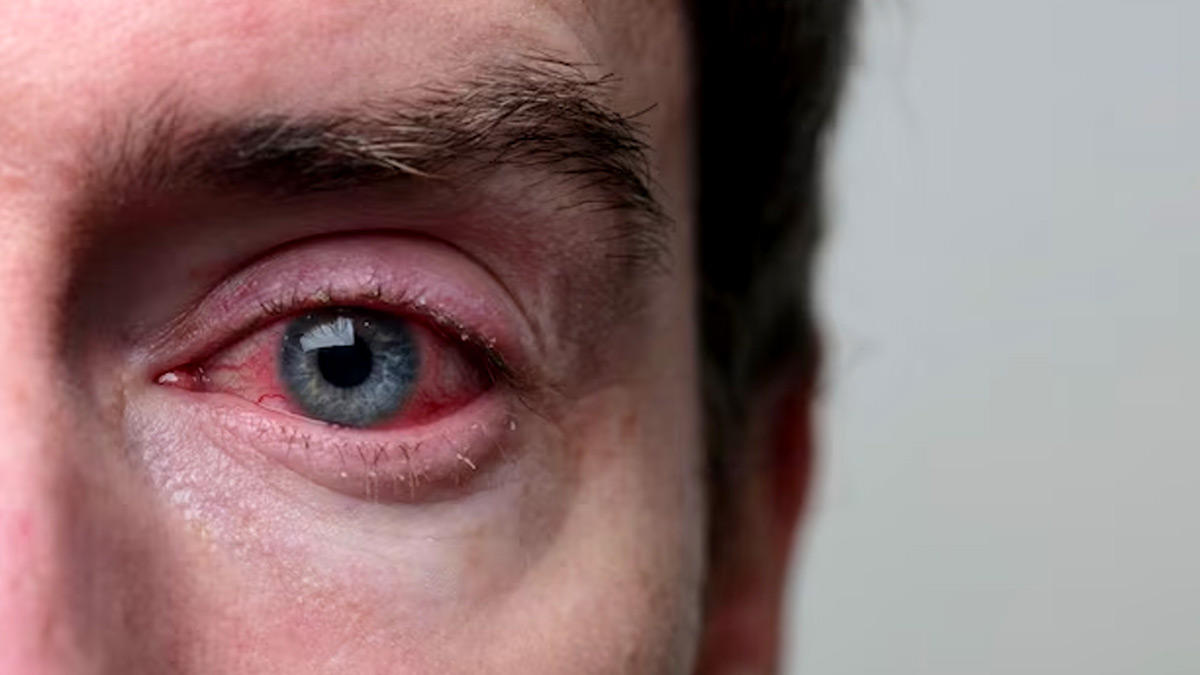
The sudden surge in acute conjunctivitis cases in Delhi has become a matter of concern. The All India Institute of Medical Sciences (AIIMS) had earlier reported approximately 100 cases per day. Conjunctivitis, also known as pink eye, is the inflammation of the layer that covers the whites of the eyes and the inner surface of the eyelids. Symptoms often include red or pink appearance in the whites of the eyes, watery or thick discharge, itching, irritation, and swelling of the eyelids.
In an interaction with the OnlyMyHealth team, Dr Mandeep Singh Basu, Eye specialist and Director of Dr Basu Eye Hospital, Delhi, discusses the length of the infection and ways to treat it quickly.
Also Read: Is Nosebleed A Sign Of High Blood Pressure? Here’s What You Should Know
How Is Conjunctivitis Caused?

“Conjunctivitis can be caused due to viruses, bacteria, allergens, and irritants,” says Dr Basu, adding that according to Ayurveda, it can also result from an imbalance of the pitta in the body, leading to inflammation and discomfort in the eyes.”
The eye infection can spread through direct or indirect contact with the eye secretions of an infected person. This includes:
- Touching or being in close proximity to someone with conjunctivitis
- Touching surfaces, towels, doorknobs, and shared items, contaminated with the virus or bacteria and then touching one’s eyes
- Airborne droplets from coughing or sneezing
- Through sexual contact
According to research, 80% of acute cases of conjunctivitis are viral, the most common pathogen being adenovirus, which are responsible for 65 to 90% of cases of viral conjunctivitis.
"Bacterial conjunctivitis is far more common in children than adults, and the pathogens responsible for bacterial conjunctivitis vary depending on the age group," the research paper adds.
Incubation Period

“The incubation period, which is the time between exposure to a disease-causing agent and the onset of symptoms, for pink eyes can vary depending on the cause,” says Dr Basu, adding, “It usually takes 1-3 days for symptoms to appear after exposure to viral conjunctivitis. Same goes for bacterial conjunctivitis.”
Also Read: Bone Pain That Worsens At Night Could Be A Sign Of Bone Cancer: Other Symptoms
Period Of Recovery

The duration for pink eye to go away depends on its cause and severity.
Dr Basu says, “Generally, viral conjunctivitis may last for a week or two, while bacterial conjunctivitis can improve within a few days of antibiotic treatment. Ayurvedic remedies like herbal eye drops or cold compresses can aid in faster recovery.”
“The quickest way to get conjunctivitis treated is to meet an eye specialist for a proper diagnosis and appropriate treatment. They may prescribe antiviral or antibiotic eye drops for viral or bacterial conjunctivitis, respectively,” he adds.
In addition, you can also apply warm compresses to the eyes to relieve discomfort, follow prescribed medication treatment as directed, even if symptoms improve, and most importantly, avoid touching or rubbing the eyes to prevent further spread.
Conclusion
Pink eye is not life-threatening. However, if left untreated, it can cause complications, such as corneal damage and vision loss.
To prevent the spread of conjunctivitis, it is crucial to practise good hygiene, such as regularly washing hands, avoiding touching or rubbing the eyes, not sharing personal items, and maintaining overall cleanliness. Additionally, individuals with conjunctivitis should avoid close contact with others, especially in communal settings, until the infection clears up.
Also watch this video
How we keep this article up to date:
We work with experts and keep a close eye on the latest in health and wellness. Whenever there is a new research or helpful information, we update our articles with accurate and useful advice.
Current Version